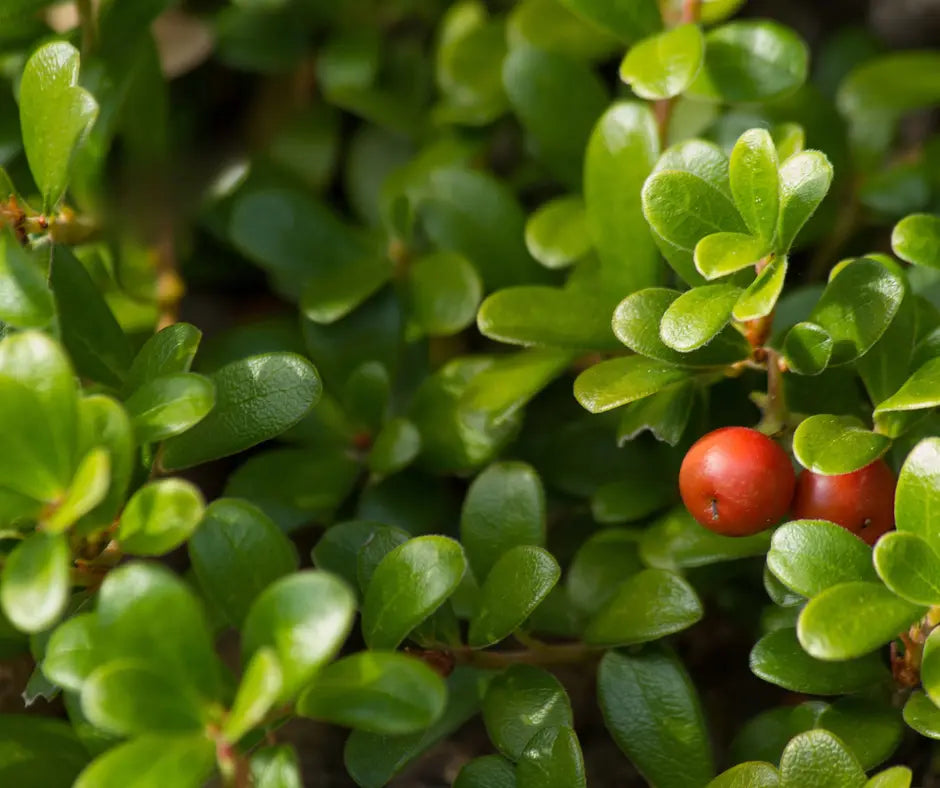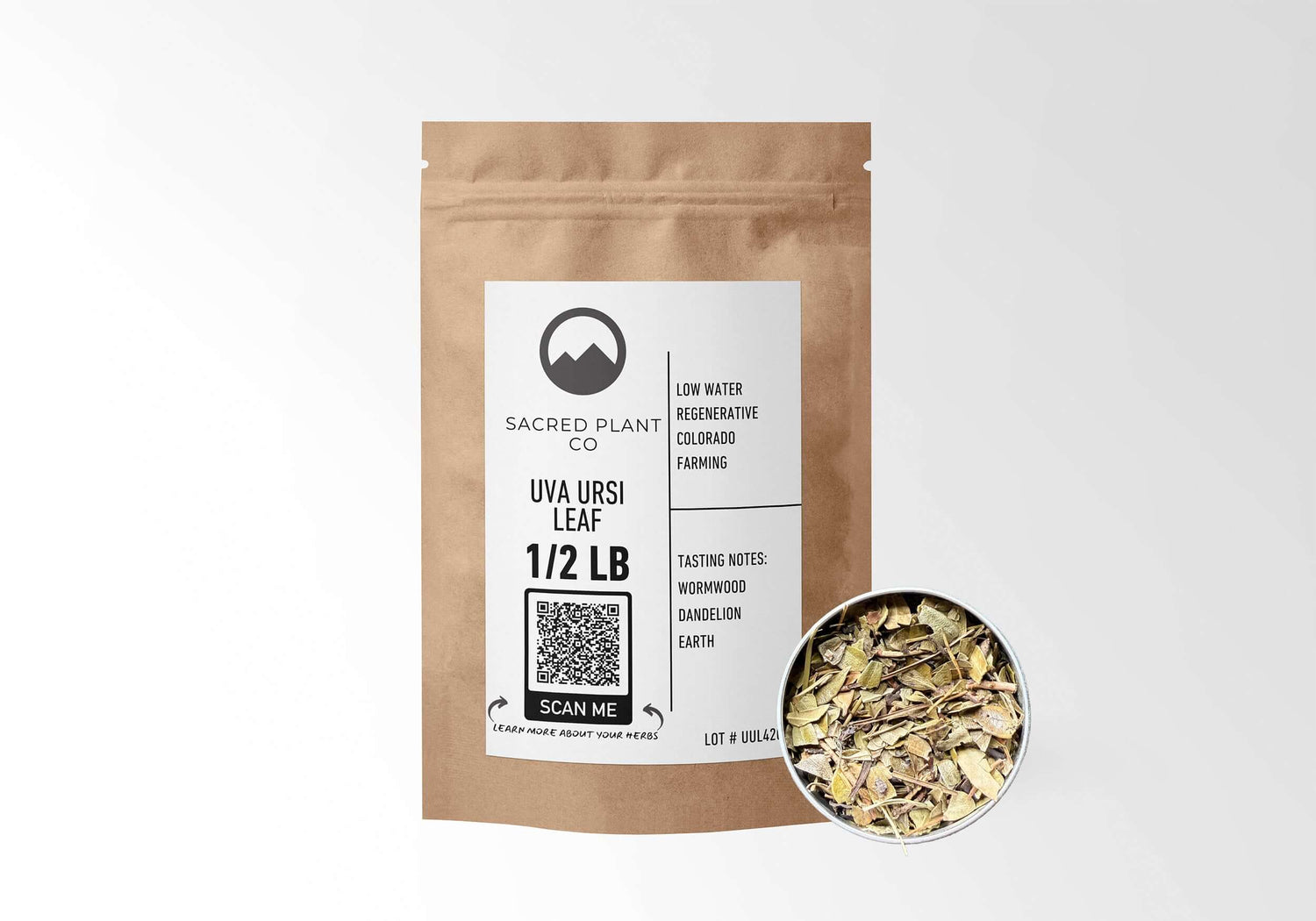Uva Ursi vs Cranberry for UTIs: What Each Does Best and How to Use Them Safely

Questions about urinary tract health often collapse two different goals into one: preventing future infections and handling mild lower urinary symptoms at the moment. Cranberry fits the prevention goal for select groups when used consistently. Uva ursi is a traditional adult-only, short-course option that some people consider for mild lower urinary discomfort while arranging medical care. Any signs of a complicated or advancing infection require prompt clinical attention: fever, flank or back pain, chills, nausea or vomiting, blood in urine, pregnancy, or symptoms persisting beyond 48 hours.
Key takeaways
- Cranberry helps reduce the risk of future symptomatic, culture-verified UTIs for some groups when taken regularly. It is a prevention tool, not a treatment for an active infection. High-quality summaries and urology guidance reflect this distinction.
- Uva ursi leaf is recognized by European regulators as a traditional herbal medicinal product for short-term relief of mild recurrent lower urinary tract symptoms in adults, with strict guardrails on dose and duration. It is not appropriate in pregnancy or lactation and should not be used long term.
Cranberry: evidence, forms, and how to use it for prevention
What the research shows. A modern Cochrane analysis reports that cranberry products can lower the risk of symptomatic, culture-verified UTIs in several populations when used consistently. U.S. government summaries echo the point that cranberry is best positioned for prevention rather than treatment. Urology guidelines allow clinicians to offer cranberry prophylaxis for recurrent UTIs in women, reinforcing where it fits in a care plan. See the latest evidence and guidance here: Cochrane review, NCCIH overview, and the AUA recurrent UTI guideline.
How cranberry may help
Cranberries provide A-type proanthocyanidins (PACs) that can make it harder for common uropathogens to adhere to urinary tract surfaces. That mechanism aligns with prevention: it may reduce the chance a new infection takes hold. It does not eradicate an infection that is already established.
Choosing a cranberry product
- Transparency matters: prefer products that state PAC content per serving and the method used to measure it. Product quality varies widely across the market.
- Form: juice, capsules, or standardized PAC supplements can be used. Capsules and standardized PAC products are commonly chosen to avoid added sugars and to keep dose consistent.
- Routine and horizon: use daily for several weeks before judging benefit. Track symptomatic, culture-confirmed episodes over two to three months and review results with a clinician.
Uva ursi: evidence, safety limits, and short-course use
Regulatory position. The European Medicines Agency’s Herbal Medicinal Products Committee lists bearberry leaf (Arctostaphylos uva-ursi) as a traditional herbal medicinal product for short-term relief of mild recurrent lower urinary tract symptoms in adults once serious conditions are excluded. Monograph and assessment documents outline practical dose windows and duration limits, and they stress adult-only use. See the EMA summary page and full HMPC monograph.
How it may work. Uva ursi leaf contains arbutin. In the body, arbutin can yield hydroquinone derivatives that are excreted into urine, where they may exert an antiseptic effect. This depends in part on the chemistry of the urine. Highly acidic urine can reduce formation of the active urinary metabolites, which is why short trials typically avoid strong urine-acidifying agents such as high-dose vitamin C unless a clinician advises otherwise. See concise safety and interaction notes in the Drugs.com monograph.
Short-course basics for adults
- Form: infusion or maceration from the leaf, or standardized tablets that declare hydroquinone-derivative content. Product labels vary by market.
- Typical adult ranges reflected in regulatory reviews: comminuted leaf infusion or macerate at 1.5 to 4 g in about 150 ml water, taken 2 to 4 times daily, with a maximum daily total around 8 g of comminuted leaf. Standardized tablets are dosed by hydroquinone-derivative content and should be used exactly as labeled in the country of sale. See assessment report excerpts in the Sources list.
- Duration: short-term only. Labels commonly state up to a week per course and no more than a handful of short courses per year without medical oversight. Persistent symptoms require evaluation.
- Who should avoid: pregnancy, lactation, children, kidney disease, and anyone whose clinician advises against use. Review all medications with a clinician first.
- Urine pH note: during a short trial, avoid strong urine acidifiers unless a clinician directs otherwise.
Clinical nuance. A pragmatic trial in primary care found no meaningful change in urinary symptom scores when uva ursi was used for several days in uncomplicated cases managed with a delayed-antibiotic approach, reinforcing the need for realistic expectations and medical follow-up. Safety reviews do not identify a strong signal for clinically apparent liver injury with short-term use, but adult-only, short-duration guardrails still apply. See summaries in LiverTox.
How to choose: prevention vs short-course relief
- Goal: fewer future UTIs. Consider cranberry as part of a prevention plan. Choose a product with transparent PAC content per serving. Use consistently and reassess after several weeks of regular intake.
- Goal: very recent mild urinary discomfort. Adults sometimes consider a brief uva ursi course within label limits while arranging medical care. Stop and seek care if any red-flag symptoms appear or if symptoms persist beyond 48 hours.
For broader hydration, restroom timing, and daily habit guidance, see Sacred Plant Co’s overview Herbal Remedies for UTIs: Natural Solutions for Urinary Health.
How to prepare uva ursi leaf
Infusion method
- Measure 1.5 to 2 g comminuted uva ursi leaf per 150 ml water.
- Pour hot water over the herb, cover, and steep for 10 to 15 minutes. Strain.
- Repeat up to the total daily amount reflected in regulatory documents, staying within label limits and keeping the course brief.
Cool maceration option
- Measure 1.5 to 2 g comminuted leaf per 150 ml cool or room-temperature water.
- Macerate for 6 to 12 hours, then strain. This gentler approach may extract fewer tannins, which can be easier on the stomach for some users.
Important: these preparations reflect traditional use ranges found in regulatory reviews. Always follow the specific label of the product in hand, limit duration, and seek care if symptoms persist.
History and cultural roots
Bearberry is referenced in traditional North American practice and appears in European herb texts focused on urinary tract support. Its reputation comes from the leaf, not the berry. Respecting that heritage today means pairing tradition with modern safety standards and clear decision rules.
Results tracking and next steps
Cranberry: track the number of symptomatic, culture-confirmed UTIs over the next 8 to 12 weeks and any change in antibiotic use. If nothing changes, discuss alternate prevention strategies with a clinician. The American Urological Association guideline offers language that helps frame those conversations.
Uva ursi: track start day, total daily amount, number of cups or tablets, changes in burning, frequency, urgency, and any adverse effects. Stop if symptoms persist, and bring notes to the appointment. Adult-only, short-course use remains the safety boundary.
Internal resources
- Overview and lifestyle tips: Herbal Remedies for UTIs: Natural Solutions for Urinary Health
- Collection context: Native American Herbs
- Quality and storage: How to Buy, Store, and Use Herbs in Bulk
FAQs
Can cranberry treat an active UTI
No. Evidence and federal summaries position cranberry as prevention rather than treatment. During an active infection, seek medical care. See the Cochrane review and NCCIH.
Is uva ursi safe in pregnancy or while nursing
No. Avoid during pregnancy and lactation. This is a firm contraindication in clinical monographs and regulatory summaries. See Drugs.com.
How long can adults use uva ursi
Short-term only. Labels typically limit a course to about a week, with advice not to repeat frequently without medical guidance. See the EMA monograph and assessment report for traditional posology.
Do diet and supplements affect uva ursi
Yes. Strong urine acidifiers such as high-dose vitamin C can reduce liberation of the active urinary metabolites from arbutin. Avoid them during a short trial unless a clinician says otherwise. See Drugs.com.
Does uva ursi replace antibiotics
No. Uva ursi is framed as a traditional short-course option for mild lower urinary symptoms in adults. Complicated or persistent cases require clinical assessment and may require antibiotics.
What are the top signs that require urgent care
Fever, flank or back pain, chills, nausea or vomiting, blood in urine, pregnancy, or symptoms persisting beyond 48 hours.
Medical disclaimer
This article is for educational purposes only and is not medical advice. Products and methods described are not intended to diagnose, treat, cure, or prevent any disease. Always consult a qualified healthcare professional before using herbs, especially if you are pregnant, nursing, taking medications, or have a medical condition.
Sources
- Cochrane Review 2023: Cranberries for preventing urinary tract infections
- NCCIH: Cranberry usefulness and safety
- American Urological Association Guideline 2022: Recurrent UTIs in women
- EMA HMPC: Bearberry leaf summary
- EMA HMPC Monograph: Arctostaphylos uva-ursi leaf
- EMA Assessment Report excerpts: adult dosing windows and duration limits
- Drugs.com: Uva ursi contraindications and urine-acidifying interactions
- LiverTox: Uva ursi hepatotoxicity assessment and clinical nuance







